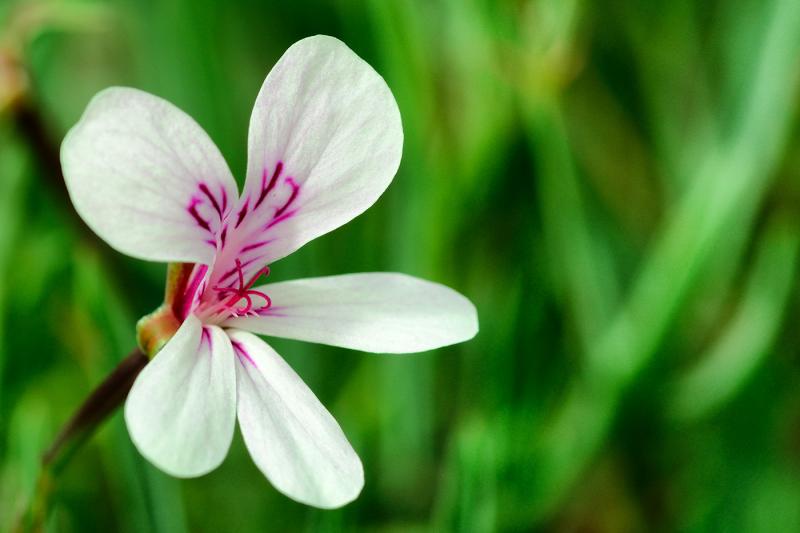Candy canes and geraniums
According to folklore, in 1670, a choirmaster at the Cologne Cathedral in Germany bent solid sugar sticks into canes to appear as shepherd's hooks. These solid white candy canes were given to children for attending the ceremonies.
The practice of handing out candy canes to kids became a popular tradition and eventually spread all over Europe and America.
In 1847, a German-Swedish immigrant, August Imgar from Wooster, Ohio, decorated his Christmas tree with paper ornaments and candy canes.
Candy canes weren't always peppermint flavored but simply sugar sticks. In the early 1900s, candy-makers added peppermint oil, and peppermint candy canes have been the norm ever since. So, geraniums added peppermint too. Pelargonium tomentosum is peppermint-scented geranium with soft, felt-like fuzzy leaves that bloom with small, inconspicuous white flowers.
The flower has five petals, two larger upper petals, along with three smaller lower petals. The large, light-green leaves release a strong peppermint aroma when brushed against or crushed between your fingers. For the strongest fragrance grow your geraniums in bright sunlight.
As a houseplant, it has a spreading growth habit and looks fine spilling over the edges of its pot.
Grow peppermint geraniums in full sun or under grow lights, and water thoroughly when the soil is slightly dry to the touch.
Geraniums are light feeders, so you may not need to fertilize them at all. Indeed, the scent will be much stronger if they are grown in soil without too many nutrients.
While actively growing, you can fertilize every four weeks or so with a water-soluble fertilizer at half strength. Never fertilize geraniums in the winter.
Water less during the winter, but never let the roots dry out completely. Geraniums like a period of dormancy and slow growth during the winter months.
Some gardeners can develop contact dermatitis from handling scented-leaf geraniums, and the plants are toxic to cats, dogs, and horses.
Use regular potting soil that is not too rich. Like all plants grown for their essential oils, rich soil can lower the strength of the fragrance. Scented geraniums can tolerate almost any soil pH, but a slightly acidic pH of about 5.8 to 6.3 is best.
Like peppermint candy canes, you may want to give away peppermint-scented geraniums. Luckily, they are simple to propagate.
Cut 6-inch-long cuttings and remove all but the top few leaves. Dip the cut end of the cutting in rooting hormone, and plant in pots filled with moist vermiculite. Soon you will have rooted cuttings ready to pot up as gifts.
For hundreds of years, scented geraniums have been used in cooking. The leaves are not usually eaten but rather used more like an herb as a flavoring and for their aroma. Peppermint geranium leaves are a great addition to homemade lemonade.
For an aromatic houseplant that thrives on neglect, try growing a peppermint-scented geranium. The calming oil may help you this holiday from becoming a human candy cane and being bent out of shape.





















































